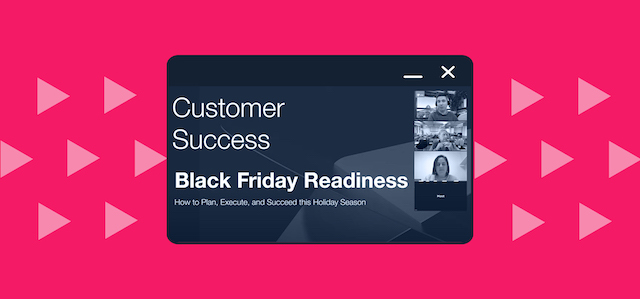
Picture yourself in your shoppers’ shoes. You are browsing an electronics ecommerce store looking for a new fridge and, suddenly, you find out that your favorite “mum influencer” has that same appliance at her home.
How do you find out? By seeing her own picture on the product page, which helps you get an idea of how big that fridge is and what it looks like in a real kitchen. It also induces trust for you to make a purchase, just like a customer review does!
This is called user-generated content (UGC) and it’s the next big thing to increase customer engagement and a website’s conversion rate.
Everyone can be an influence(er)
The era of perfect people announcing perfect products has come to an end. Nowadays, people are more attracted to ads protagonized by diverse people representing different cultures, generes, ethnicities, ages and particularities. They’re also more likely to trust the recommendations of friends and family and people they know — even if only virtually in the case of influencers.
Brands have also noticed that a dad who mistakenly dresses his son in judo clothes on the day the kid has basketball sells more than a perfect family having a perfect afternoon tea. The reason consumers find that imperfection attractive is simple: they find themselves reflected in those daily small errors much more than they do in a polite, clean, well put-together figure.
That’s exactly what happens with user-generated content. As its name suggests, users create and share content themselves, including news about their latest purchases, in social media posts. The phenomenon can either be organic (unpaid) or sponsored (paid), but the fact is that everyone is a content creator now.
Sharing your shopping updates on Instagram, for instance, is now normal, and also a source of social approval. Now, you have the option to tag the brand’s account, tap into a bigger following by using their branded hashtags and even be reposted via a story or a feed photo, potentially getting more likes and followers and, well, dopamine.

The brands’ answer
In 2020, the average number of weekly brand posts on Instagram was four and, digging deeper into specific industries, we see fashion brands produced more, with an average of 6.7 weekly posts. Putting all these brands’ content together with the number of posts generated by single users, we get an ever-growing gold mine ready to exploit.
So what can brands do with this organically created content? First, they can give visibility to their customers by showing their shared pictures on their websites, enhancing the customer experience and engagement. Indeed, shoppers love feeling like they’re being heard and treated with importance by their favorite brands, and a simple UGC integration can do magic. Additionally, having customer testimonials, either written via reviews or visual via photos, can offer social proof and heavily influence buying decisions of those that are “just looking”.
Second, brands can provide another view of the articles they’re offering. By showing more images of a product, the consumer can have a better understanding of how that fabric looks like, how that jeans fit on a shorter person or even how the color of the item looks in a darker non-studio light. UGC beats virtual reality (VR) any day.
Tips & tricks for UGC
Here are some lessons learned from my time being the former Project Manager of UGC in one of the biggest houses of fashion in Spain:
- Look towards up-and-coming influencers. The cost of hiring a professional model is huge, whereas some influencers may share for free the seedings you sent them. And, if selected properly, that influencer can extend the awareness of the brand to a wider targeted audience. Statistics say that 50% of people have visited a website to make a purchase after seeing a product or service on Instagram.
- Go for a mix of UGC and professional videos. For example, in the fashion industry, professional models do not realistically represent all body shapes, so “normal people” may give customers the visual information they’re looking for from a more tangible perspective. According to studies, using a mix of UGC and professional videos can help to drive sales by up to 35%.
- The more images / videos on the product listing page (PDP), the higher the conversion. The real troublemaker in fashion ecommerce PnLs are returns. According to recent consumer surveys, 45% of online shoppers won’t complete a purchase if product information is insufficient. Therefore, including more pictures means giving more information about the article, and also reduces returns.
- Displaying organic content on the website makes the user feel special. Selecting, out of all tagged posts, which images to show on your brand’s website may seem a tedious task. And if you add the step of asking for rights, sharing UGC on your online store takes even longer. But the user first tagged the brand for a reason (getting noticed), and if their image ends up being displayed, they’ll feel more loyalty, spread the word and repeat the process, increasing customer lifetime value (CLV).
- There is a sense of “community” in using a specific hashtag that connects you to a brand. All the brands should consider having their own specific and identifiable hashtag, especially those who target the Gen Z consumer — which, by the way, account for 40% of global consumers.
- Keep it on brand. It may seem that not all shared pictures on Instagram fit with your website or feed aesthetics, but applying a good filter and selecting the most relevant ones may be the key move to boost your conversion rate and engagement.

A win-win situation
Regardless if you are managing a fashion ecommerce channel or a furniture online store, implementing the widget that shows users’ content on the product page can provide better information about the product you are selling and give a touch of reality to that virtual SKU.
At the same time, by sharing that content, and starting UGC campaigns, you vastly increase customer engagement and persuade others to keep posting about your products, not to mention buying. All in all, everybody wins from this marketing strategy.













